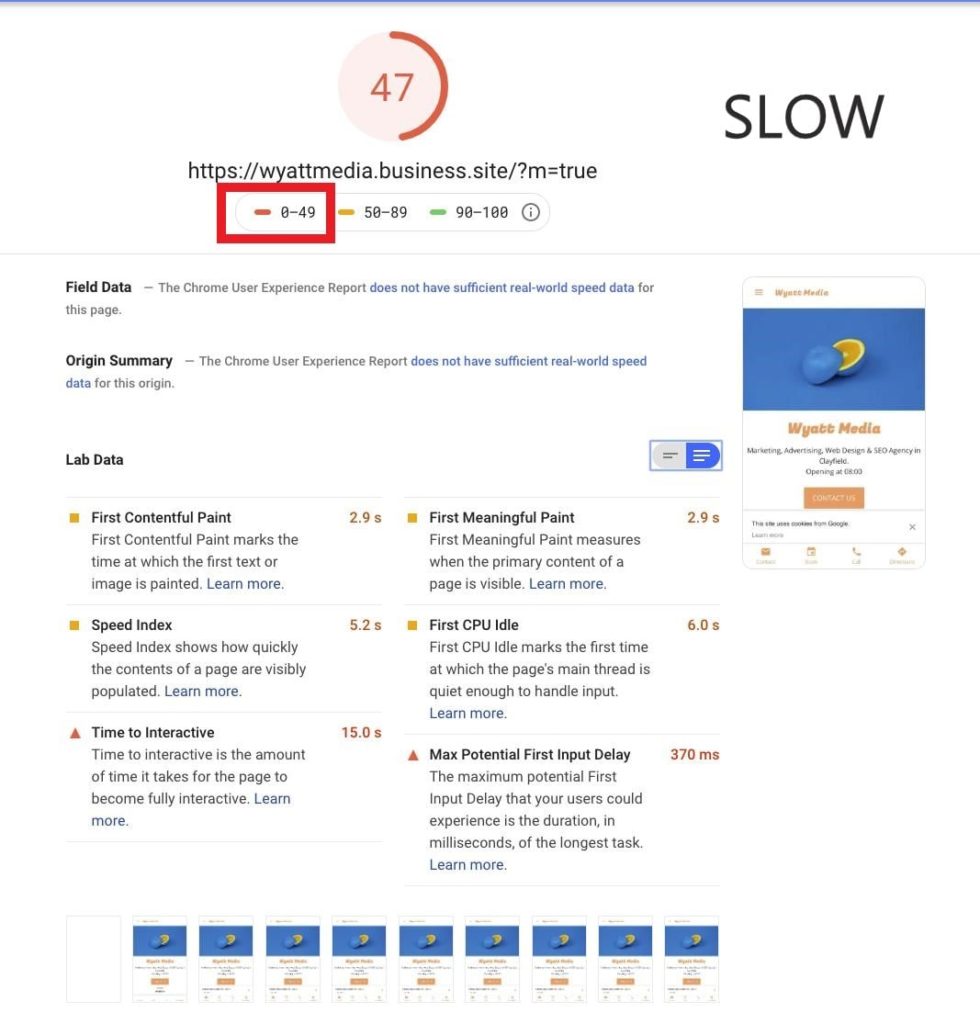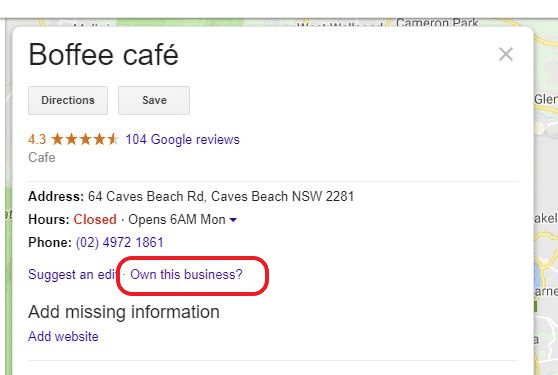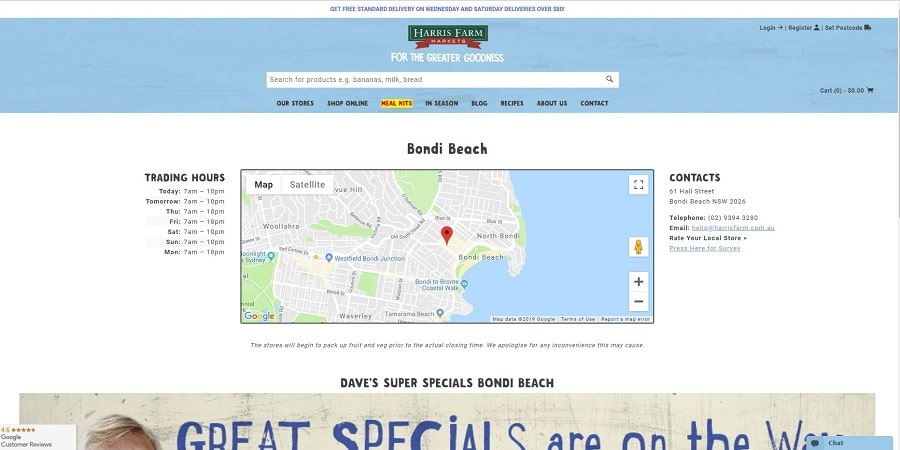SEO deserves its own dedicated team and budget because it plays a crucial role in driving organic traffic and enhancing the digital experience for customers.
For many local businesses, marketing is their main focus. Search engine optimisation (SEO) is often overlooked as a niche aspect of digital marketing, that doesn’t serve a purpose for businesses with physical stores or those serving specific geographic areas.
However, this is where local SEO would be the most precise and efficient tool to leverage search engines for enhancing traffic and sales for your local business. Whether you operate a service area business or a brick-and-mortar store, local SEO can significantly expand your business and draw in more customers.
In our latest guide, we cover everything you need to know about local SEO and how you can enhance your online presence.
Key Takeaways
- Google My Business (GMB) is so important for Local SEO, and businesses should ensure GMB profiles have accurate information, high-quality images, and customer reviews.
- NAP (Name, Address, Phone Number) consistency across all online platforms is crucial for local SEO success, as it helps build trust with search engines and customers.
- On-page optimisation, including the use of location-specific keywords, is essential for better local search rankings.
- Mobile optimisation and site speed are critical factors, as many local searches occur on mobile devices.
- Effective local SEO can significantly boost a business's visibility and drive more local customers to its physical or online location.
What is Local SEO?
Local SEO, short for local search engine optimization, is all about improving a website’s online visibility to draw in more potential customers from local searches. When it comes to local search results, search engines like Google analyze various signals including local content, links, profile listings, and social media pages. Given that Google dominates with a whopping 94.7% market share of search engine searches in Australia, it’s clear that most folks rely on Google when seeking out local businesses.
Local searches are searches combined with a location attached, such as:
- Bathroom Renovations Newcastle
- Blinds Newcastle
- Cafe near me
- Doctor near me

Local SEO is instrumental in enabling businesses to advertise their products and services directly to local customers who are actively seeking them out. Unlike standard SEO practices, local SEO incorporates a geographical aspect, such as “plumber Sydney,” tailoring the optimization process around specific locations.
It involves establishing and strengthening signals and relevance within a particular geographic area. Whether you operate a brick-and-mortar establishment or a service-based business, implementing an effective local SEO strategy can significantly enhance your business’s visibility and success.
How does local SEO differ from SEO?
The main contrast between SEO and local SEO lies in their target audience: local SEO hones in on a specific geographic location. Its primary goal is to present your products and services directly to potential customers within your local area. While local SEO employs similar strategies as regular search engine optimization, such as creating quality content and building links, it places a particular emphasis on your region.
Consider your own search habits—do you often include a city or town name in your search queries, like “curtains Newcastle”? By focusing on the pertinent region for your business, local SEO helps Google and other search engines associate your business with that specific geographic area.
So, do you require SEO or local SEO? Typically, local SEO is most beneficial for businesses catering to specific regions or those with physical locations. Think of plumbers, painters, builders, and local shops—all of these local businesses aim to appear in localized Google search results.
What are the benefits of local SEO?
With 97% of consumers looking online to find local business information, the importance of local SEO can not be overemphasised. Furthermore, 50% of people who did a local search on mobile went to a physical store within one day, and 18% of local mobile searches led to a sale within one day!
Local searches are on the rise, comprising 46% of all searches conducted on Google, indicating a significant trend toward local intent. Over the past two years, there has been an astounding 900% surge in ‘near me’ searches. When consumers seek out a local business or service, Google recognises that they often include specific location identifiers such as city names, towns, or postcodes. For instance, rather than simply searching for “blinds,” users might specify “blinds Newcastle,” signaling their preference for blinds stores in that particular area.
The surge in local searches is largely fueled by the widespread adoption of mobile devices. Mobile users leverage their devices to search for products and services on the go, with 78% of local searches on mobile devices resulting in offline purchases.
Taken together, these trends underscore the importance of incorporating local SEO into your digital marketing strategy. To establish dominance in your local geographic region, it’s crucial to implement a comprehensive local SEO strategy to ensure potential customers can easily find your products or services when they search.
But before delving into the implementation of your local SEO strategy, let’s first explore the Local Pack.
What is Google's Local Pack?
When you’re browsing Google, you’ve probably come across one of the most significant features of local SEO—the Google Local Pack. This is the boxed section that pops up at the very top of the search results page whenever you make a local search using Google. In the Local Pack, you’ll find the top three local business listings that are most relevant to your search query.
Below is the local pack that results from a search of ‘bathroom renovations Sydney’

These results can be incredibly helpful to the user as they can find relevant and highly rated businesses near them and see opening hours, phone number, reviews and locations. Everything that is shown within the local pack results comes from the Google My Business profile of the business. More on this later.
Before You Get Started on Local SEO
Before diving into any SEO efforts, it’s crucial to ensure that you have the fundamental elements in place. Start by conducting a quick evaluation of your website.
Firstly, check if your website is mobile-friendly. Since Google switched to mobile-first indexing last year, it primarily indexes your mobile site rather than the desktop version. You can utilize Google’s Mobile-Friendly Test tool to assess your website. Given that 61% of mobile searchers are more inclined to reach out to a local business if they have a mobile-friendly site, it’s essential not to stumble at the initial hurdle.
Additionally, make sure your website isn’t so outdated that it’s painful to look at. Keeping your site up-to-date is crucial for maintaining a positive user experience and ensuring it remains visually appealing to visitors.
We would also recommend against using Google My Business’ free website builder, Google Sites. In a review of the service, Search Engine Land found that there are quite a few negatives from an SEO perspective. Including:
- One-page site, no option to create additional pages.
- No ability to add custom page titles and meta descriptions.
- No Google Analytics integration.
- Lacks the ability to add Local Business Schema (more on this later).
- Cannot add alternate text to images.
- Cannot add additional call-to-action buttons. (Source)
In addition to these issues, despite being developed and hosted by Google they also fall down on a page speed test.

Mobile PageSpeed Insights audit thanks to Hamish Wyatt
The key problem here is there is no way you, the business owner can address any of these speed issues. Your ability to control and improve your website is greatly limited.
If you are interested in undertaking more advanced local SEO strategies, testing your website speed is a great place to start. These three resources provide a great insight into area’s you can improve the speed performance of your website:
Happy with your website? Now you can get started with local SEO!
Start Building Your Local SEO Strategy
After establishing a fantastic website that caters to your potential customers’ needs, the next step is to drive traffic to the site. To achieve this, focus on the following areas to develop your local SEO strategy.
Google Business Profile is a free and easy-to-use tool for businesses and organisations to manage their online presence across Google, including Search and Maps – Google.
1. Google Business Profile
Google Business Profile (formally Google My Business – GMB) is your first step to improving your local SEO.
According to Moz, a Google Business Profile is one of the top local ranking factors for both local pack and organic results. This is hardly surprising when 46% of all Google searches are local. Yet amazingly 56% of local retailers haven’t even claimed their Google Business Profile listing.

As of February 2022, you will now need to create, claim and edit your Google Business Profile directly on Google rather than the soon to be defunct Google My Business page or Google My Business app.
You will most likely be familiar with the outcome of a Google Business Profile listing – a branded Knowledge Panel:

Branded knowledge panel for Merewether Surfhouse
Your Google Business Profile showcases details you provide, such as business information, contact details, services offered, and operating hours. However, it also includes features beyond your control, like Q&A sections and Google Reviews.
Once you’ve set up your Google Business Profile, don’t just leave it. It’s essential to regularly update and maintain it to ensure accuracy. Up-to-date and accurate information significantly enhances the experience for potential customers. Additionally, the Insights section of GMB offers valuable data on your profile’s performance. According to Databox, GBP Insights provides insights into how customers discover your site and is a favored feature among experts. Continuously monitoring these metrics can help inform decisions on how to leverage this platform effectively.
WORD OF WARNING! – Don’t go and create multiple Google Business Profile listings for an address that your business does not operate from. It won’t help you rank.
Google states “Listings on Google Business Profiles can only be created for businesses that either have a physical location that customers can visit, or that travel to visit customers where they are.”
2. Local Citations
A citation refers to an online mention of your business, typically featuring your business name, address, and phone number (NAP). These mentions commonly appear in online directories or business listings, with Google Business Profiles being just one example.
Citations hold significant importance in local SEO as they assist search engines in confirming the existence of your business. When your business is cited in credible sources with accurate and consistent information, it signals to search engines that your business is legitimate.
Obtaining citations from reputable national business sites or local business directories can enhance your business’s chances of ranking in local search results. According to Bright Local, 68% of consumers indicate that they would cease using a local business if they discovered incorrect information in local directories.
It’s worth noting that some refer to NAPW (Name, Address, Phone Number, Website) or NAPU (Name, Address, Phone Number, URL) citations. Having the website link from a reputable website can provide additional value as it offers extra information to search engines, validating your business.
Citations can be categorised into two types: structured and unstructured.
Structured Citations
A structured citation is your business information (NAP) typically appearing in a business listing. Any business listing directory where you can submit your business details and get a citation are structured citations. Example of sites in Australia for structured citations include:
- Yellow Pages
- Sensis
- Local Search
- SuperPages
- HiPages
- OneFlare
Here’s an example of a structured citation for a plumber in Wollongong on Local Search:

Unstructured Citations
An unstructured citation is more likely to be the result of press, social media and blogs. Any citation where your NAP is shown but is not displayed in a structured format.
Here’s an unstructured citation example for new Sydney restaurant XOPP on goodfood.com.au:

Building local citations is key to your local SEO strategy. However, if your business has been around for many years, there is a risk of incorrect information being listed across your citations without you even knowing. If your citations are not regularly updated and cleaned up it can negatively impact your local SEO.
Whitespark has a good list of the 30 best local citations in Australia to help get you going.
3. Online Reviews
Customer reviews have a greater impact on acquiring new customers than many businesses realise. Google recommends that businesses should, “interact with customers by responding to reviews that they leave about your business. Responding to reviews shows that you value your customers and the feedback that they leave about your business.”
You shouldn’t just chase ratings and reviews for the sake of the algorithm though. Reviews matter beyond straight optimisation. Research shows that ratings and reviews are vitally important to how consumers make decisions:
- 88% of consumers trust online reviews as much as personal recommendations.
- 66% of consumers stated many online reviews make them trust a brand online.
- Buyers require an average of 40 online reviews before believing a business’s star rating is accurate.
- 86% of consumers read reviews for local businesses
- Having five reviews results in purchase likelihood increasing by a factor of almost 4.
- Negative reviews stop 40% of buyers from wanting to use a business.
Responding to reviews
It’s clear that Google values your responsiveness to customer reviews on your Google My Business profile. It’s essential to respond to positive and negative reviews to demonstrate to your customers and search engines that you’re actively engaged, regardless of the feedback’s nature. Maintaining a robust online reputation is crucial for successful local SEO strategies.
4. Local Keyword Research
Have you thought about what specific keywords you want your business to rank for? If you’re offering a dog wash service, it wouldn’t make sense to waste time trying to rank for something unrelated, like being the top local butcher.
Let’s stick with the example of your dog wash business. When people search for your services, they’ll likely include a location in their query, such as “dog wash Newcastle,” “Newcastle dog wash,” or “dog wash in Newcastle.”
Conducting local keyword research doesn’t have to be complicated. Begin by listing all the services you offer and the locations you serve. This gives you a starting point for identifying relevant keywords.
Once you have some initial ideas, leverage Google’s autocomplete feature to generate additional search suggestions. This can help you uncover more potential keywords to target.
Here is the search for “dog wash newcastle.”

Once you determine a list of keywords, you can get an idea if they are trending up or down by entering them into Google Trends.

Repeat this process for any other location/services you offer, and you start to build quite a comprehensive list of potential local keywords to target.
We recommend the following resources if you are keen to learn more about keyword research.
- How To Do Keyword Research for SEO — Ahrefs’ Guide
- 139 Experts Share Best Tools For Keyword Research in 2021 (With Leaderboard)
- 9 Free Keyword Research Tools (That CRUSH Google Keyword Planner)
- KEYWORD RESEARCH: The Definitive Guide
- How to Do Keyword Research for SEO: A Beginner’s Guide
- Us! Keyword research is one of our specialties at Firewire.
5. On-page SEO
A lot of elements in on-page SEO are part of the standard SEO practices. This includes stuff like using keywords, crafting title tags, writing meta descriptions, internal linking, and optimizing page speed, among others. If you want to dive deeper, there are additional resources available on on-page SEO.
However, when it comes to implementing on-page SEO within a local SEO strategy, there are a few nuances to consider. Let’s begin by discussing how to structure your landing pages to improve local rankings.
Local Landing Pages
Local landing pages are webpages created on your site to showcase your business services in specific geographic regions. These pages are particularly useful for:
Service area businesses – For instance, a plumber based in Sydney’s CBD may also serve areas like North Sydney, South Sydney, and Western Sydney. Local landing pages help them highlight the various regions they cover around the city.
Multi-location brick-and-mortar businesses –For example, Harris Farm operates 27 physical stores across Australia. They use local landing pages to inform customers and Google about their physical locations. Additionally, they aim to rank each individual store in the local pack search results.
Here is Harris Farm’s landing page for their Bondi Beach store:

Before we go into what type of content should be included on location-based landing pages, let’s make sure you get the URL structure sorted.
Local landing page URL structure
Your website structure can play an important part in determining if the page will rank for the keywords targeted. When building multiple location-based landing pages a simple URL structure is recommended.
- yoursydneybusiness.com.au/sydney-cbd
- yoursydneybusiness.com.au/parramatta
- yoursydneybusiness.com.au/blacktown
- yoursydneybusiness.com.au/penrith
Keep the URL structure clean and simple. It doesn’t need to be overcomplicated.
Local landing pages - what not to do!
Now before you go off and create hundreds of spammy local landing pages, there a few things you should learn about what not to do! According to Moz, these common pitfalls harm rather than help your chances of ranking.
- Fake addresses – You are not the smartest person in the world to think that listing a bunch of fake addresses on local landing pages will help you rank. Just like in GMB, attempting to appear more local with fake addresses is against Google’s guidelines.
- Keyword Stuffing – Google’s Webmaster guidelines specifically state that they do not want pages with blocks of city names, postcodes and keywords. Examples of keyword stuffing include:
- Lists of phone numbers without substantial added value
- Blocks of text listing cities and states a webpage is trying to rank for
- Repeating the same words or phrases so often that it sounds unnatural, for example:
We sell custom cigar humidors. Our custom cigar humidors are handmade. If you’re thinking of buying a custom cigar humidor, please contact our custom cigar humidor specialists at [email protected].
- Don’t go overboard with landing pages – It should be obvious by now, but Google does not like spammy content. So unless you have a physical location in each location, there is zero need to create hundreds of pages targeting every suburb and region around your business. Focus your efforts on creating a handful of landing pages for locations that make sense for your business.
What to include on your local landing page
Now we have sorted what you shouldn’t include on your local landing pages – what should you include? As always it comes back to high quality, relevant content. Your goal should always be to help the search engine user solve their problem.
- Local NAP – Make sure you include the local store opening hours if it’s a brick and mortar business and the local stores’ contact details (name, address and phone).
- Unique description of services – Take the time to write a unique description of the services you provide and how they are relevant to the location.
- Local map of service area – A custom Google map can display your service area for the region or the location of your store.
- Client testimonials – Demonstrate that you are already part of the local area with reviews from local clients.
- Case Studies – Show examples of how you solve the problem people are searching for. These can either link off to an individual page or included on the local landing page.
With all this in mind, the key thing is to identify what matters to your potential customers and provide the most useful information possible.
Further Resources for On-page SEO:
6. Link Building
Your website may look fantastic and have top-notch content, but if nobody is discovering it, you’re missing out. To surpass your competitors in search engine rankings, you must establish yourself as an authority in your field. This means earning links from other reputable websites to boost your credibility in the eyes of search engines.
Backlinks, also referred to as links or external links, are hyperlinks that connect one website to another. These links are crucial for search engine algorithms to crawl websites and uncover new content. Search engines like Google utilize links to gauge the relevance of a website’s page to a user’s search query.
Google has explicitly stated that links between websites are among the most critical ranking factors. However, not all links hold the same weight. A link from a highly authoritative website carries more weight and offers greater benefits to your rankings than a link from a low-quality site.
It’s essential to prioritize obtaining a few relevant links from high-authority websites over numerous low-quality links. Reputable websites often link to other authority sites, while low-authority or spammy sites do the opposite. Pursuing low-quality links can be risky as Google may view it as manipulative link building, potentially resulting in penalties for your website.
Some common link building tactics include:
- Quality blog content
- Develop local resources
- Unique research
- Guest posting on other websites
- Local press
Link building is not an overnight process and requires ongoing development of great content and engagement in your community.
Further resources for link building
Ready to dive into Local SEO?
That is a truckload of information to get you started on local SEO. Is it worthwhile investing the time into this? Absolutely! However, for your business, it may be easier to talk to the experts in local SEO – us!
Your market position is unique, so your SEO strategy should be too. We craft tailored approaches based on your specific competitive landscape and growth targets. Contact our team today and let’s engineer real search growth.










